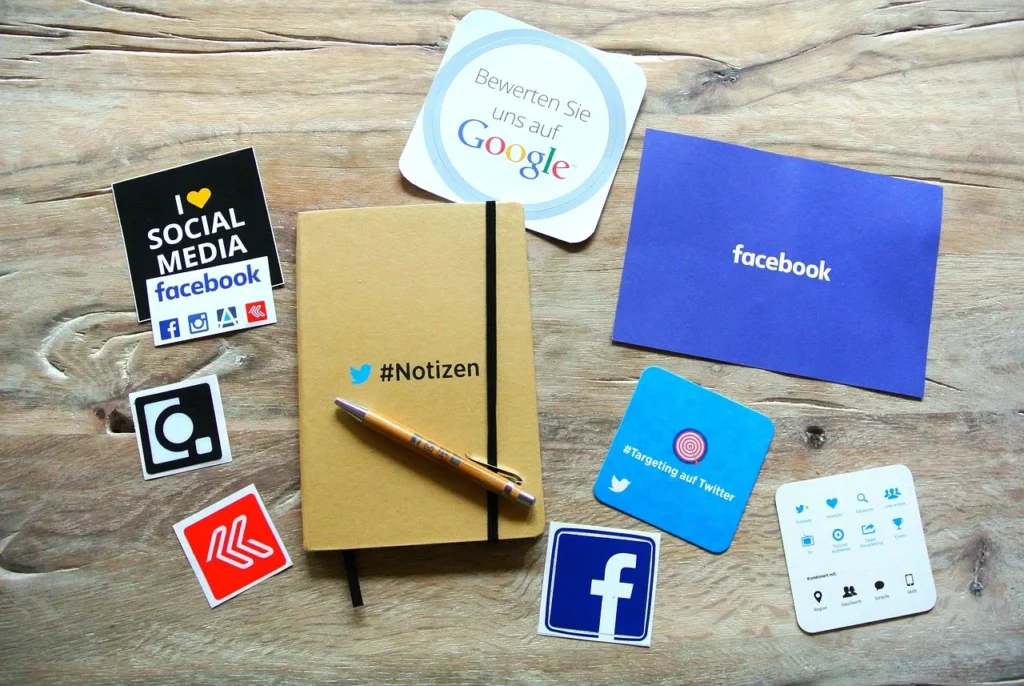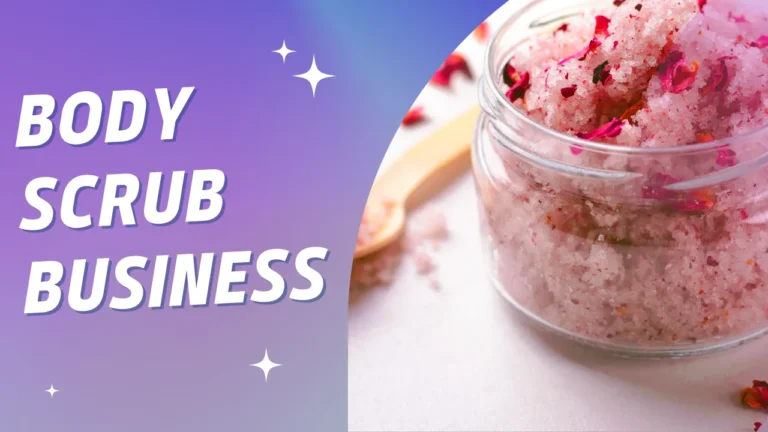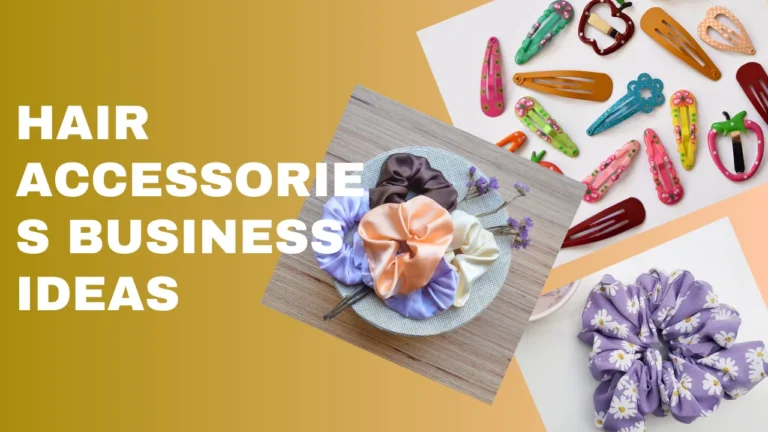Are you looking to start a profitable bamboo clothing business?
Want to know the process of setting up a clothing venture? You’ve come to the right place.
Bamboo clothing is famous as a sustainable alternative to traditional clothing materials. With its breathability, comfort, and durability, this is becoming an attractive choice for everyone.
Starting the business requires proper material sourcing, a good understanding of the target market, product research, planning, and knowledge of this line, which are primary for a successful business.
In this post, we’ll discuss the process, the potential of the clothing, and its opportunity.
You’ll discover;
- Is bamboo clothing worth it to start?
- Overview of bamboo clothing and business
- Process of business setup from scratch
- Strategy for marketing, branding, and selling
Along with the process of the bamboo clothing business, you will get more information related to market growth, fluctuation, demand and popularity,
So, let’s move on to the steps of the process.
What is bamboo clothing?
Bamboo fabric is an eco-friendly, sustainable, and popular material in the clothing and fashion industry; it is considered good over traditional fabrics and an excellent choice for creating clothing products.
Bamboo fabric is soft, comfortable, naturally hypoallergenic, antibacterial, breathable, moisture-wicking, and environmentally friendly; we can use it for creating (t-shirts, dresses, pants, and other clothing products).
Creating a clothing line focusing on bamboo fabric and selling various products can be a profitable opportunity for aspiring entrepreneurs who want to start their businesses in this field.
Types of bamboo fabric:
| Type | Production process | Properties |
|---|---|---|
| Bamboo viscose | Chemically processed bamboo pulp | Soft, smooth, breathable, moisture-wicking |
| Lyocell bamboo | Closed-loop system using less water and chemicals | Soft, smooth, breathable, sustainable |
| Fine bamboo | Mechanically processed bamboo fibers | Durable and less common |
Benefits of bamboo clothing
Bamboo clothing has many benefits because it is naturally antibacterial and hypoallergenic, a great option for sensitive skin.
- Soft and breathable
- Moisture-wicking
- Antibacterial and antifungal
- UV-protective
- Hypoallergenic
- Durable
- Eco-friendly
| Benefits | Description |
|---|---|
| Soft | Provide a luxurious, smooth, and soft texture feeling. |
| Breathable | It wicks moisture away, keeping you dry in various conditions. |
| Thermal regulation | It helps regulate body temperature in both hot and cold weather. |
| Hypoallergenic | Gentle on sensitive skin reduces the risk of irritation. |
| Antibacterial and odor-resistant | Natural antimicrobial properties combat bacteria and odors. |
| Eco-friendly | Rapidly renewable resource requires less water and no pesticides. |
| Biodegradable | It breaks down naturally, reducing environmental impact. |
| UV protection | Offers some natural protection against harmful UV rays. |
| Versatility | It can be blended with other materials for different styles. |
| Low Maintenance | Easy care, often machine-washable without special handling. |
Bamboo clothing pros and cons
You should know both the advantages and disadvantages of bamboo clothing.
It is a soft and sustainable product; however, it has shrinking and wrinkling issues and potentially higher prices than conventional clothing.
Here are the pros and cons:
Pros
- Sustainable
- Soft
- Breathable
- Antibacterial
- Hypoallergenic
- Durable
Cons
- Expensive
- Wrinkles easily
- Slow to dry
- Not Soft As other Fabric
Bamboo clothing characteristic
Bamboo cloths are popular among people of all ages due to their excellent characteristics; here are some characteristics and key features of bamboo fabric:
- Soft and comfortable texture
- Excellent breathability
- Moisture-wicking properties
- Natural odor resistance
- Hypoallergenic and gentle on sensitive skin
- Provides UV protection
- Sustainable and eco-friendly material
- Biodegradable and environmentally friendly
- Durable and long-lasting
- Versatile for various clothing styles and purposes
Clothes made from bamboo
Many types of clothing products are made from bamboo fabric and are eco-friendly.
Bamboo fabric is durable and can absorb moisture effortlessly, and its hypoallergenic properties make it suitable for sensitive skin, preventing irritation and itching.
Here are some innovative ideas to create multiple products from one type of fabric.
| T-shirts Tank Tops Polo Shirts Hoodies Sweaters Dresses Skirts Pants Leggings Shorts Activewear (yoga pants, sports bras) Underwear (briefs, boxers, panties) Bamboo Socks Sleepwear (pajamas, nightgowns) | Sleepsacks Baby Bibs Baby Blankets Bathrobes Bamboo Towels Bed Sheets Pillowcases Duvet Covers Scarves Hats Gloves Headbands Face Masks |
How to Start a Bamboo Clothing Business? Steps

1. Decide your business model
You can find different ideas and business models in the bamboo clothing line.
It allows aspiring entrepreneurs to enter this line with less barrier entry; you can choose a business model depending on your resources, interests, and experience.
Business model including (manufacturing line, online selling, boutique shop, and wholesaler business model).
Choose a business model to set up your business from scratch as the demand for bamboo clothing grows, so there is good potential for making and selling them for money.
If you are passionate about starting your own business in the clothing industry, bamboo clothing can be the right option; here, we discuss the complete process.
Breakdown of different business model, their requirement, target markets, etc.
Manufacturing Line:
You can set up a manufacturing plant in a dedicated space to produce high-quality bamboo clothing focusing on a specific niche.
The process is buying raw materials, preparing them, focusing on a clothing niche, and producing various clothing products.
- Business model: Design, manufacture, and sell bamboo clothing offline and online.
- Requirements: Raw material, equipment, manufacturing space, workforce, fashion design skills, manufacturing experience, and marketing skills.
- Target customers: Wholesalers, online retailers, clothing stores, individual buyers, etc.
Setting up a manufacturing line requires more investment, including a physical warehouse, raw materials, machinery, a trained workforce, and a well-structured business plan.
Important requirements;
- Financial investment
- Production expertise
- Labor resources
- Supply chain management
- Market analysis and demand forecast
- Business and financial planning
It is not recommended for all; you can start if you have a good understanding of the production line and a strategic plan for successful operation, then consider this idea.
Sell clothes online:
You can sell clothing directly to consumers by creating an online e-commerce store.
In the digital age, everyone buys products online, and there is high demand for e-commerce platforms like Amazon, Etsy, eBay, Walmart, etc.
An online business model requires a good understanding of online selling, social media marketing, packaging, branding, and shipping.
- Business model: Source bamboo clothing from manufacturers and sell it online.
- Requirements: E-commerce experience, creating a website, and selling online.
Open a boutique:
- Business Model: Sell bamboo clothing in a brick-and-mortar store by creating a physical store in your local area and a high foot traffic potential area.
- Requirements: A good location, adequate space for inventory setup, retail experience, fashion sense, and marketing skills.
Open a physical retail shop to sell different types of bamboo clothing products and clothes of other brands, sizes, colors, and focusing on demographics.
- Choose a prime location.
- Design your store layout.
- Decorate with furniture
- Organize your clothing product.
- Manage product inventory
- Hire staff and employees.
To establish a successful retail store, selecting a prime location with high foot traffic is crucial; designing an inviting and functional store layout and organizing products effectively for good customer experience is the most vital step.
Become a wholesaler:
Becoming a wholesaler of bamboo clothing can be a profitable business model.
Wholesalers purchase products in bulk from manufacturers or suppliers and then resell them at a higher price to retailers, clothing stores, or individual consumers.
- Business model: Source bamboo clothing from manufacturers and sell it to retailers, clothing stores, and individual customers, and sell it at online stores.
- Requirements: Good connection with manufacturer, inventory space, communication skills, and funds to buy clothing products in bulk.
No matter what type of business model you choose, all business models have their advantages and disadvantages, so the important is research, planning, and execution.
2. Research and analyze the market
Before starting the business line, understand the market demand, target audience, competition, demographics, and the clothing industry.
You can conduct market research to analyze those things in a better way.
You can create a high-quality clothing line by analyzing the market intent, customer buying behavior, and their need.
This helps you to stand out from the market competition.
There are many ways you can conduct your research process; the most effective way is online research – social media, industry websites, Google Trends, online marketplace sales reports, etc.
Market size:
Here, you can see the growth of the global bamboo apparel market. It is becoming increasingly popular due to its sustainability and eco-friendly properties.
Here are the critical points of the data shared by FMI (future market insights).

Key points:
- The market is projected to reach a valuation of US$4,026.9 million by 2023.
- As well is expected to expand at a CAGR of 6.0% from 2022 to 2032.
- The market is currently valued at US$2,248.5 million in 2022.
You can visit the official website to learn more about the market demand, scope, competitive landscape, and key product segments.
Competition:
Understand the market competition, as the demand for bamboo clothing is increasing, and the market is competitive with time.
Many entrepreneurs enter every year in the clothing sector and establish their brands, so carefully research your competitors to take a competitive advantage.
To succeed in the bamboo apparel market, you must address the following factors: competition from established players, high-quality products, unique selling propositions, competitive pricing, and a well-defined marketing strategy.
Demand:
By analyzing market demand and targeting the right customer segment, you can determine the direction for developing an eco-friendly product.
This analysis can be conducted online or offline, utilizing tools like Google Trends to assess online search trends and gather data from social media platforms.

In the bamboo apparel segment, there is a wide range of products.
The most trending products include Bamboo T-shirts, underwear, bathrobes, towels, socks, hats, scarves, gloves, bags, etc.
Target customer:
Try to reach all types of age groups, initially focusing on one category, but target all ages of people; as your business grows, you can expand your offering.
3. Create your business plan
Building a successful business is not easy; it requires extensive research and a good understanding of the product and target customer.
Write a well-researched business plan focusing on those factors (demand, competition, products, niche, and your target customer).
Your strategic plan will help in providing a road map toward success.
A comprehensive business plan should include your key ideas, goals, mission, vision and target market, along with a well-defined strategy for creating high-quality products and implementing a competitive marketing approach.
Executive Summary:
The executive summary is a concise overview of your business plan where you can highlight the goal, mission statement, USP, and strategical approach to succeed.
Company description:
In a company description, you can add legal structure (sole proprietorship, partnership, LLC), ownership details, and your products’ vision, objectives, and values.
Market analysis:
Conduct market research, identify your target customer, research demographics, know the competition, and determine the market size and growth potential.
Product line:
Write your production process, raw material, supplies, and requirements in a product line.
Marketing and sales strategy:
You need to outline your marketing and sales strategy.
4. Find manufacturer and supplier

After understanding the target market and writing a business plan, the next step is to define your product requirements, such as clothing niche, sizes, colors, and quality standards.
According to your requirement for production, find a reliable supplier for buying raw materials, supplies, equipment, and machinery.
Explore both online and offline sources:
- Explore B2B Marketplaces (Alibaba, Amazon, Tundra, etc.)
- Search on Google “Bamboo manufacturing supplies” and use relevant keywords
- You can connect with suppliers from Social Media (LinkedIn, Facebook, Reddit)
- Online Directories (ThomasNet, Kompass)
- Wholesale Clothing Marketplaces (FashionGo, LAShowroom)
- Eco-friendly Supplier Directories (Sustainable Fashion Directory)
Offline sources:
- Trade Shows and Exhibitions
- Local Business Directories
- Networking at industry events
- Consult experienced manufacturers or designers.
- Visit local fabric stores.
To find a reliable supplier, you must connect with industry professionals and build good relations with them. Additionally, online resources (directories, marketplaces, social media platforms) are the best place for finding suppliers.
- Do your own research to find the right supplier
- Make sure to check quality, pricing, & services.
- Reach out to potential manufacturers or suppliers
- Visit the manufacturer or supplier’s facility
- Get Quotes from multiple manufacturers or suppliers
- Negotiate the terms of the contract
5. Source eco-friendly materials
To start a bamboo clothing production line, you need careful research, proper resources, equipment, suppliers, raw materials, staffing, reputed suppliers, etc.
List of materials and equipment:
- Bamboo fabric (buy from suppliers in bulk)
- Sewing machines
- Cutting tools (scissors, rotary cutters, cutting mats)
- Patterns and design tools (rulers, measuring tapes, pattern-making materials)
- Thread and notions (buttons, zippers, elastic bands, trims)
- Production equipment (fabric cutting machines, sergers/overlock machines, pressing irons, industrial steamers)
- Labels and packaging (customized labels, tags, polybags, shipping boxes)
6. Choose a suitable location
Finding a suitable location is vital to setting up the clothing store, manufacturing space, and inventory. Select a location focusing on your business size and goal.
Consider your business model and find the best place; some facilities should be there (raw material availability, transportation, electricity, skilled labor force, near the target market, potential competitors, etc.).
- Manufacturing: For setting up, this line requires manufacturing space, inventory space, packaging area, employee workspace (cutting, sewing, finishing), and a common area.
- Online store: For an online store, you can set up your office at home (if small space), either find a location (buy or rent) for office space, storage space, shipping area (packaging, labeling), or product photography area.
- Physical store: Retail space near high potential area, fitting rooms, storage space (inventory, supplies, equipment), cashier area.
- Wholesale model: Wholesale space (shelving, lighting, ventilation), loading docks, office space.
Rent a suitable space where you want to set up those facilities and contact your local real estate agent to know about rental costs, facilities, and the renting process.
7. Design your own clothing
If you are starting with a production line, you must create your product line with a unique design to get maximum profit by attracting potential customers.
Let’s discuss the steps involved in a production line:
- Understand your customer
- Develop a product concept
- Choose the right fabrics
- Plan for unique designs
- Manufacture your product
- Create attractive packaging
Before manufacturing any product, understand your target customer’s needs, preferences, and demographics. Each customer has their own choice -color, design quality, etc.
So first analyze them and create a list (size, design, color, pattern) to produce a product that fulfills broad customer needs.
| Sizes | Colors | Patterns | Designs |
|---|---|---|---|
| XS (Extra Small) S (Small) M (Medium) L (Large) XL (Extra Large) XXL (2XL) 3XL | Natural White Black Blue Green Pink Purple Yellow Gray | Solid Stripe Floral Paisley Geometric Animal print Tie-dye | T-shirts Tank tops Shirts Blouses Dresses Skirts Pants Robes Sleepwear |
After understanding your customer, develop a product concept to solve their problem and fulfill their needs with a high-quality clothing product.
Brainstorm some ideas and create sketching for development (consider – purpose, unique features, and design).
8. What are the legal licensing and paperwork
Legal requirements for a bamboo clothing business can vary depending on the country and region. Understanding the labeling, advertising, and product safety regulations is essential.
In some jurisdictions, specific certifications might be required to ensure the authenticity and sustainability of bamboo products.
Additionally, it is essential to comply with labor laws and fair trade practices.
Consulting with legal experts or industry associations can provide valuable guidance in navigating these legal obligations for a successful bamboo clothing business.
Business Registration:
Register your business as a legal entity, such as a sole proprietorship, partnership, or limited liability company (LLC).
Secure your brand identity by registering your business name.
Licenses and Permits:
Research and obtain the licenses and permits required to operate a clothing business in your area (general business licenses and sales tax permits).
Taxation:
Understand your tax obligations and register for the appropriate Employer Identification Number (EIN) or a VAT/GST number based on your location and business structure.
Trademarks and Intellectual Property:
Protect your brand name, designs, and logos by registering trademarks.
Contracts and Agreements:
Establish clear contracts and agreements to govern your business relationships, including manufacturing agreements, supplier contracts, distribution agreements, and customer terms and conditions.
Insurance:
Secure your business from potential losses by applying for appropriate insurance coverage, such as general liability insurance, product liability insurance, and workers’ compensation insurance.
9. Market your bamboo clothing

You must create an effective marketing strategy to sell bamboo clothing, including free and market marketing.
Free marketing strategies:
- Create a website and blog:
- Design the webpage attractively and professionally.
- Optimize the website for search engines to improve visibility.
- Promote the website on social media platforms to drive traffic.
- Social media marketing:
- Create social media profiles on relevant platforms like Instagram, Facebook, and TikTok.
- Regularly publish engaging and visually appealing clothing-related content to attract and engage the target audience.
- Partner with influencers:
- Collaborate with popular fashion influencers who align with your brand’s values and target audience.
- Leverage the influencer’s reach to promote your products to their followers effectively.
- Use email marketing:
- Build an email list of interested customers by offering incentives for signing up, such as discounts or exclusive content.
- Send regular newsletters promoting new products, blog posts, and special offers to nurture leads and drive sales.
Paid marketing strategies:
- Run paid search ads:
- Utilize paid search advertising platforms like Google Ads and Facebook Ads to target relevant keywords and reach a wider audience online.
- Craft compelling ad copy and landing pages to maximize conversion rates.
- Social media advertising:
- Employ social media paid promotion on platforms like Facebook, Instagram, and TikTok to target specific demographics and interests.
- Utilize social media analytics to track ad performance and optimize campaigns for better results.
- Create sponsored content:
- Partner with YouTubers, bloggers, and social media influencers to create sponsored content that promotes your clothing brand.
- Ensure the sponsored content aligns with your brand’s identity and resonates with the influencer’s audience.
Frequently Asked Questions (FAQs)
Is bamboo clothing expensive?
Bamboo clothing is expensive, but it is generally considered in the mid to high price range compared to conventional fabrics.
What is a bamboo fabric called?
Bamboo fabric is commonly called bamboo viscose or bamboo rayon.
Is bamboo clothing long-lasting?
Yes, bamboo clothing is a long-lasting fabric. Also, bamboo fibers are naturally strong and durable.
What are the disadvantages of bamboo Fabric?
Disadvantages of bamboo fabric:
-Shrinks more than other fabrics
-Can wrinkle easily
-More expensive than cotton
-Susceptible to pilling
-May contain harmful chemicals
What Are Bamboo Viscose Benefits?
Bamboo viscose offers benefits such as softness, breathability, moisture-wicking properties, and potential hypoallergenic qualities.
Final thought
It can be a suitable decision if you want to become successful and have a passion for creating a unique and competitive product.
Requires proper research and a good understanding of the target market, demand, and competition. So, study the market and start your journey with the growing clothing line.
Hopefully, all the steps mentioned are helpful and informative; if you have other doubts, comment. We are also here to answer your questions.
You may also like:





